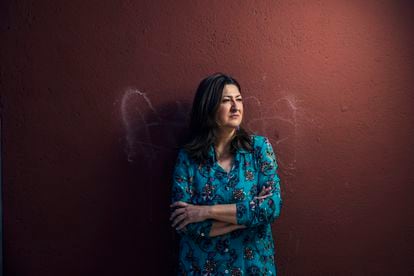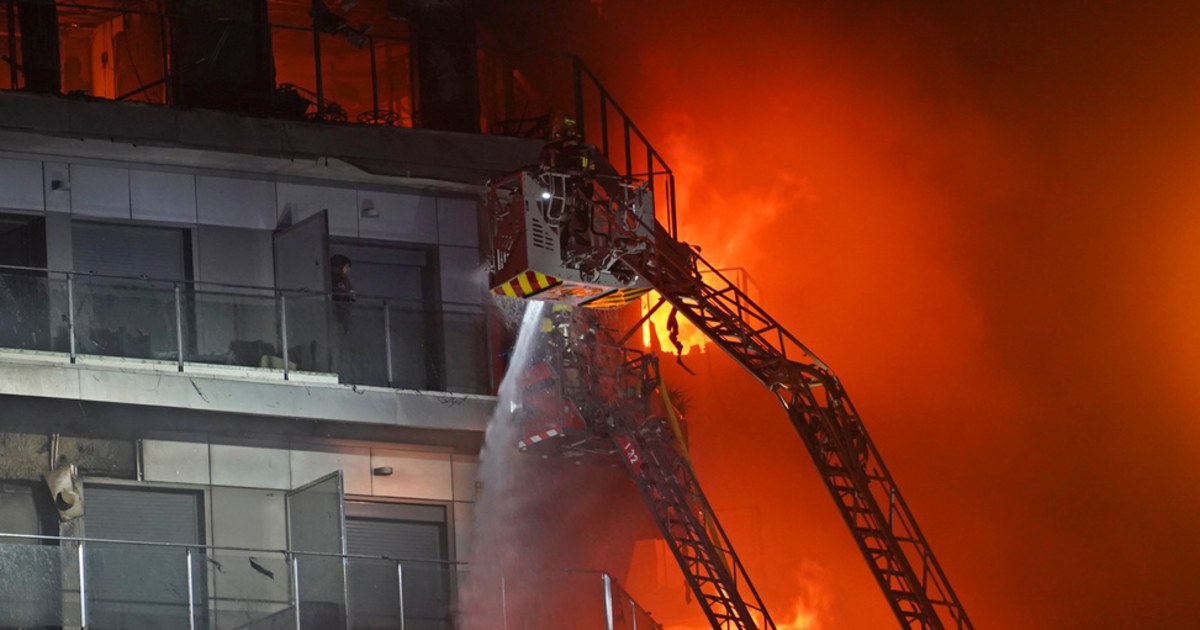José Bretón, in August 2012, during the search at the Las Quemadillas farm in Córdoba in which he killed his two children, Ruth and José.Julián Rojas Ocaña
Carmen Pastor, Esmeraldo Rapino, Jesús Rubio and Joaquín Palacios are names that may not mean anything to most. However, if you mention, for example, José Bretón, El assassin de la baraja, El assassin del rol or Burgos Triple Crime, and look behind the television image, of the corpse on the ground covered by a thermal blanket, of the detainee or the victims' broken relatives, you will find their professional biographies, their way of approaching and prosecuting crime, a dedication that made them, as policemen or civil guards, an essential part of the black chronicle of Spain. “It is them, but it could have been others. Captain Jesús Rubio had a nostalgic attack a year after retiring.There were several unsolved media cases, and he was very concerned because he believed that when his generation disappeared, all that — the experience, the smell, the years on the street — could disappear and that it would be very good if it were in writing, "says journalist Cruz Morcillo on the genesis of
Homicide Department
(KO Books).
The journalist and writer Cruz Morcillo, in Madrid last Thursday, Samuel Sánchez
Armed from a structure in which the first-hand testimonies of the four agents serve as a common thread, this original hybrid, emerged after hours and hours of conversation with them, addresses major cases in recent history, others less well known, resounding successes of the police and failures of the same nature. "The only red line is that none of the four companions will look bad", confesses Morcillo (Jaén, 48 years old) about a work that arises from the gratitude to its sources, but which is not friendly. There, what was not done well is portrayed, many times in the words of the protagonists themselves. "I think you should not hide things, but you have to avoid delving into the morbid, the damage to victims who can no longer suffer," he adds to explain his journalistic creed after 23 years covering events in the newspaper
Abc
and the tone of a book in which murders, torture, disappearances, abuse and other vileness are rigorously told.
“I rely on data and what I see.
Tight journalism.
Old School.
Including the first person cost me because I was afraid of betraying myself ”, tells of a book in which her figure serves as a link between the testimonies and in which she also addresses old cases, from when the author was“ eating lollipops ”, stories in the that documentation has been essential.
When the criminal origin is clear, disappearances are horror, worse than murder.
They are a death sentence for families
In
homicide department
, Morcillo traces case by case the black geography of Spain in the last 40 years, a country where more than 80% of crimes are solved. And it does so from the perspective of those who succeeded but, nevertheless, could not solve the other 20%, were unable to avoid all that pain, and will be haunted forever by the shadow of that frustration. “It is a recurring feeling. The agents do not deal only with the dead and disappeared, but also with the relatives, who are victims, ”he says before adding that the four agents, already retired after decades of service, would return if they could solve any. "That has some poetic justice." The process is parallel in Morcillo as a journalist. “People don't believe it, but you never get used to it. I cry, I don't sleep ”,counts when asked to analyze how that relationship with death and suffering affects him personally.
The ex-military Alfredo Galán, who confessed to the author of the six murders attributed to the Murderer of the deck, upon his arrival at the Puertollano Courts in July 2003.MANUEL RUIZ TORIBIO / EFE
In these parallel lives of crime investigators and journalists, technology has marked a turning point. “The work has not changed, but now they have that extra. Technology helps and simplifies research a lot, ”explains Morcillo, before the conversation disperses to readings by Javier Marías, Dennis Lehane or James Ellroy. Back to reality, some nostalgia seeps into the veteran journalist's speech when she regrets that access to sources is no longer the same, that people are no longer in the same street. Something similar happens to agents. “We seem to have forgotten to ask. The premise is clear to me: when the investigation is over, you have to know more about the life of the victim and the perpetrator than they do. Technique does not contribute that ”, Rapino commented in the book.
I think that you should not hide things, but you have to avoid delving into the morbid, the damage to victims who can no longer suffer.
Morcillo, aware that there is "a fashion for black, criminal, the red note" and "a massive consumption of series that have focused on that", is happy to include himself in the current, to satisfy the demand.
In this book on violent deaths, disappearances feature prominently.
Sonia Iglesias, Piedad García or Marta del Castillo are just three of the best known cases.
“When the criminal origin is clear, disappearances are horror, worse than murder.
They are a death sentence for families.
Is this chapter out of tune?
No, I think he owed it to the victims ”, he defends himself.
Always, or almost always, women or children at the hands of men.
Relatives and friends of Sonia Iglesias, in a concentration in 2010 in the Plaza del Obradoiro in Santiago de Compostela.Jorge Leal / EFE
Juan Francisco LO kidnapped, raped and killed the 13-year-old girl Laia Alsina when she went down the stairs of the portal where her grandparents lived to the street, where her father was waiting for her.
The case is not in the book, but the author exposes it as one of those moments in which a predator, in two hours, "can end a family, defeat it for life."
“In 2019 I took a taxi at the Barajas airport. She was returning from Almería from covering the trial against Ana Julia Quezada, the murderer of the child Gabriel Cruz, her partner's son. (...) 'If you could help us, Cruz,' the taxi driver politely whispered to me. 'I am Jorge, Piedad's brother [García, who disappeared in 2010 in Boadilla del Monte (Madrid)]'. The journey to my house was an open-hearted conversation in which the grief, pain and anger of an entire family were so clear that words were missing. More than a decade later none of them have recovered ”, he narrates near the end of the book. The episode would not work in a novel as implausible. But it's all pain and truth Pure
true crime
to the Spanish.



/cloudfront-eu-central-1.images.arcpublishing.com/prisa/Z4UBGLQEOBHVJGLHLVFFREHAC4.jpg)











